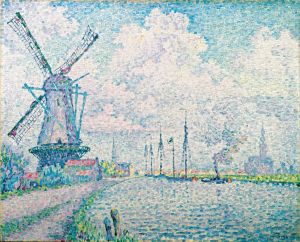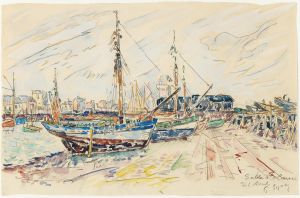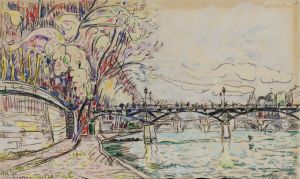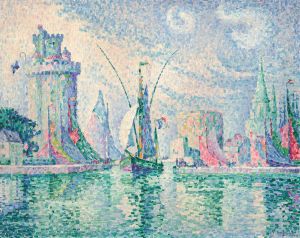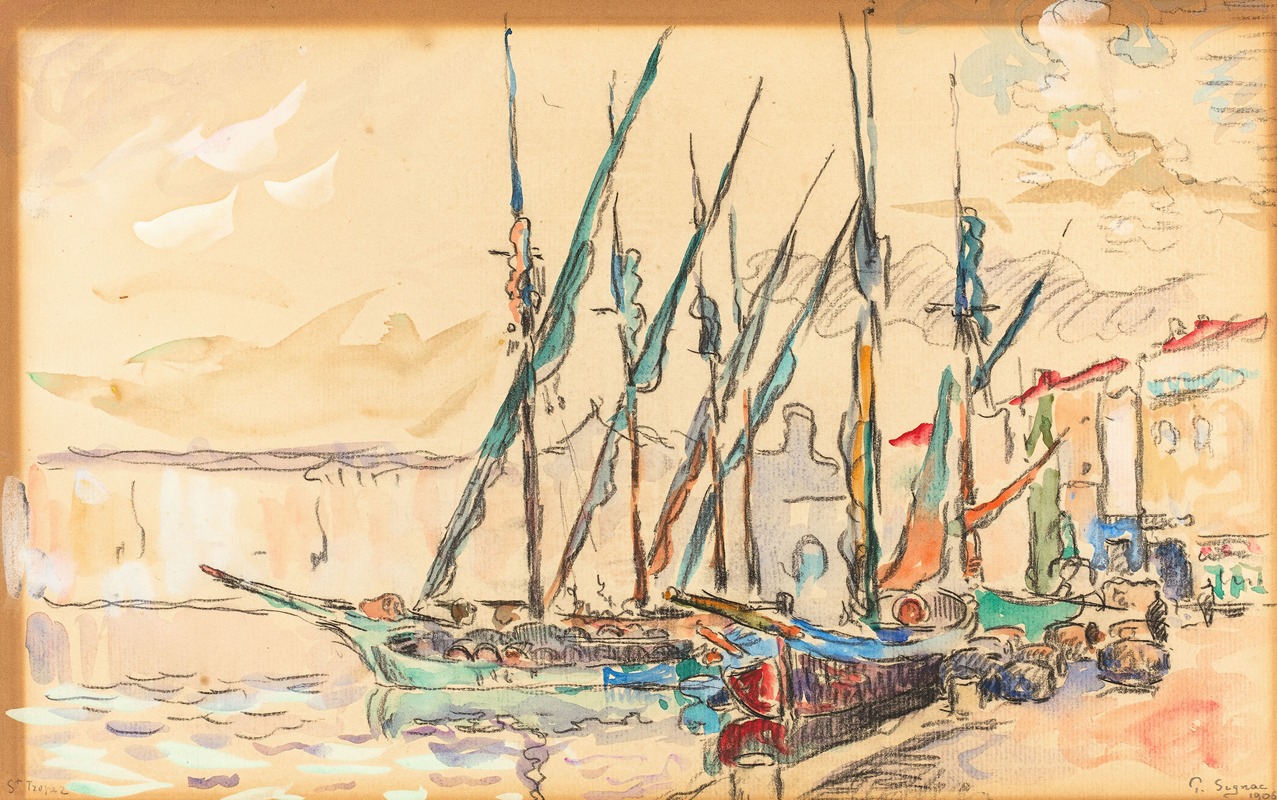
St Tropez
A hand-painted replica of Paul Signac’s masterpiece St Tropez, meticulously crafted by professional artists to capture the true essence of the original. Each piece is created with museum-quality canvas and rare mineral pigments, carefully painted by experienced artists with delicate brushstrokes and rich, layered colors to perfectly recreate the texture of the original artwork. Unlike machine-printed reproductions, this hand-painted version brings the painting to life, infused with the artist’s emotions and skill in every stroke. Whether for personal collection or home decoration, it instantly elevates the artistic atmosphere of any space.
Paul Signac's painting St. Tropez is a notable example of the artist's work in the Neo-Impressionist style. Created in 1892, the painting reflects Signac's dedication to the technique of Pointillism, a method of painting developed by Georges Seurat that involves the application of small, distinct dots of color to form an image. Signac, who was a close collaborator and admirer of Seurat, adopted and further developed this technique, emphasizing its potential for vibrant color harmonies and luminosity.
The painting depicts the coastal town of Saint-Tropez, located on the French Riviera. Signac first visited Saint-Tropez in 1892 and was captivated by its natural beauty and the quality of its light. He eventually made the town his home, purchasing a house there in 1897. Saint-Tropez became a significant source of inspiration for Signac, and he painted numerous works featuring its harbor, boats, and surrounding landscapes.
In St. Tropez, Signac employs his characteristic Pointillist technique to capture the shimmering effects of sunlight on the water and the vivid colors of the Mediterranean environment. The composition features a view of the harbor, with sailboats gently floating on the water and the town's buildings visible in the background. The use of small, precise dots of color creates a sense of movement and atmosphere, evoking the play of light and reflections on the surface of the sea.
Signac's work during this period was heavily influenced by his interest in color theory and the scientific study of optics. He believed that the careful juxtaposition of complementary colors could create a more dynamic and harmonious visual effect. This approach is evident in St. Tropez, where the artist's use of contrasting hues enhances the vibrancy of the scene.
St. Tropez is considered an important work within Signac's oeuvre and within the broader context of Neo-Impressionism. The painting exemplifies the movement's emphasis on scientific precision, color experimentation, and a modern approach to landscape painting. Today, Signac's contributions to Neo-Impressionism are widely recognized, and his works are celebrated for their innovative techniques and their ability to capture the beauty of the natural world.
The painting is held in the collection of the Musée d'Orsay in Paris, France, where it continues to be admired by art enthusiasts and scholars alike.





